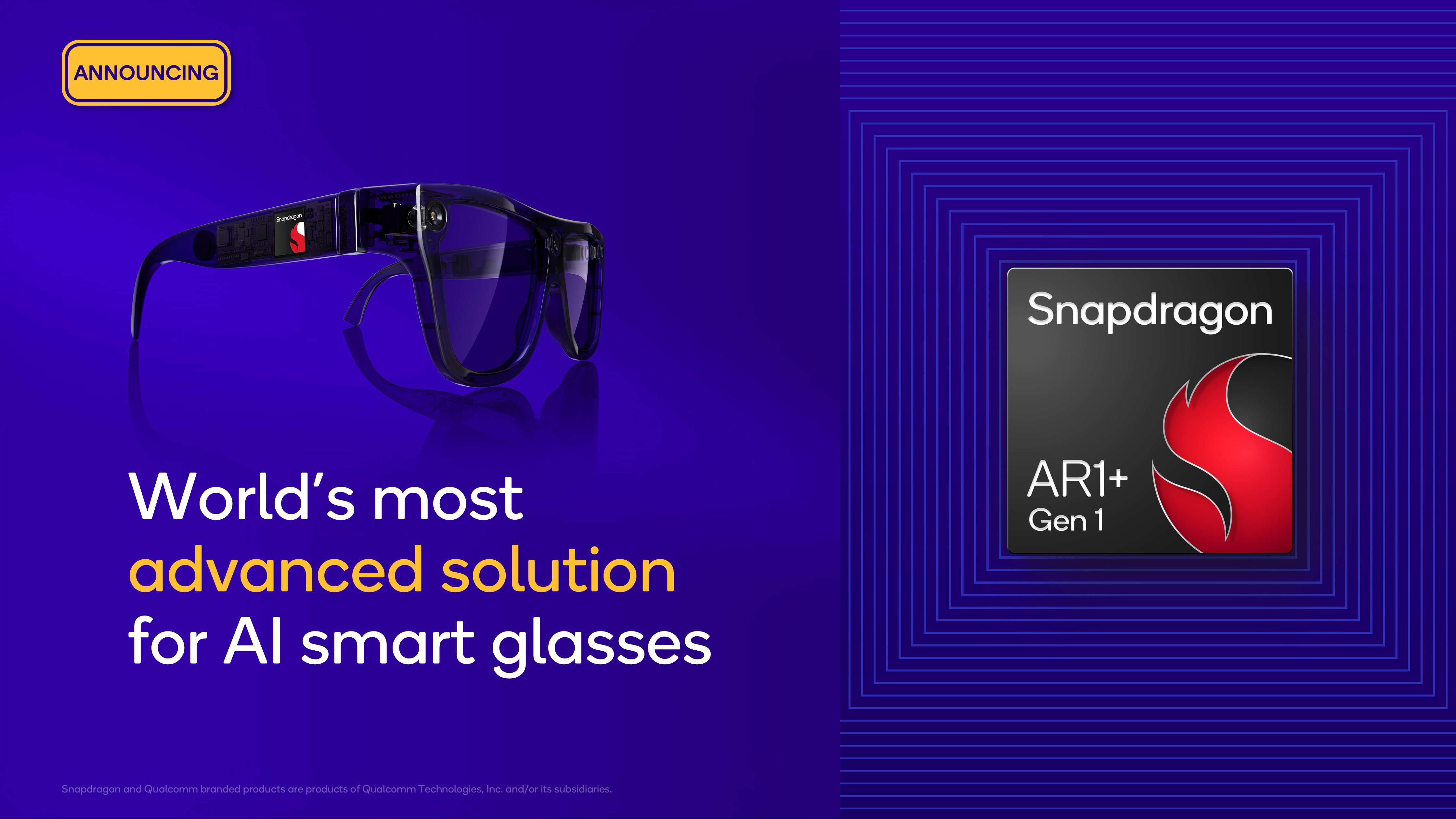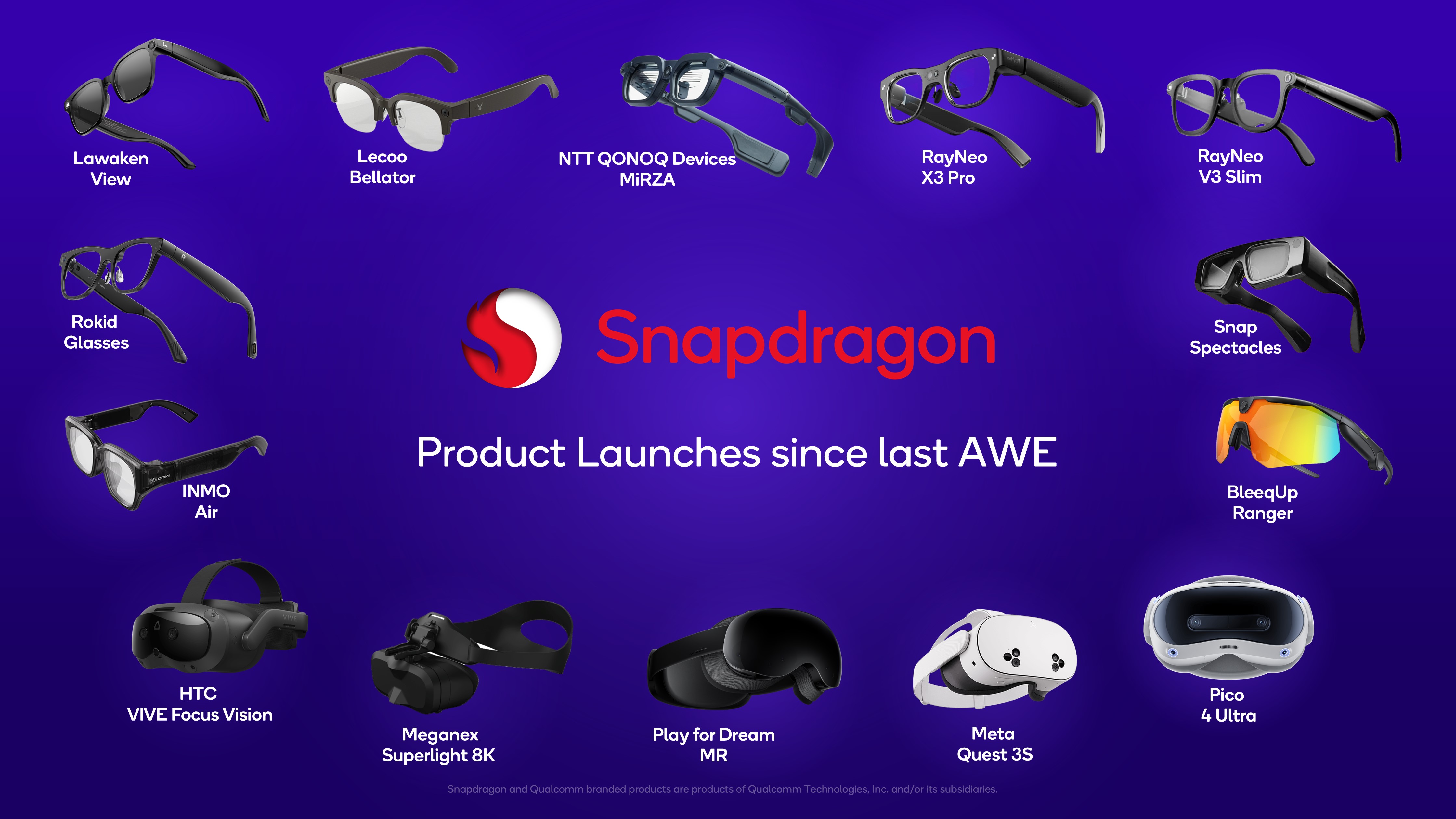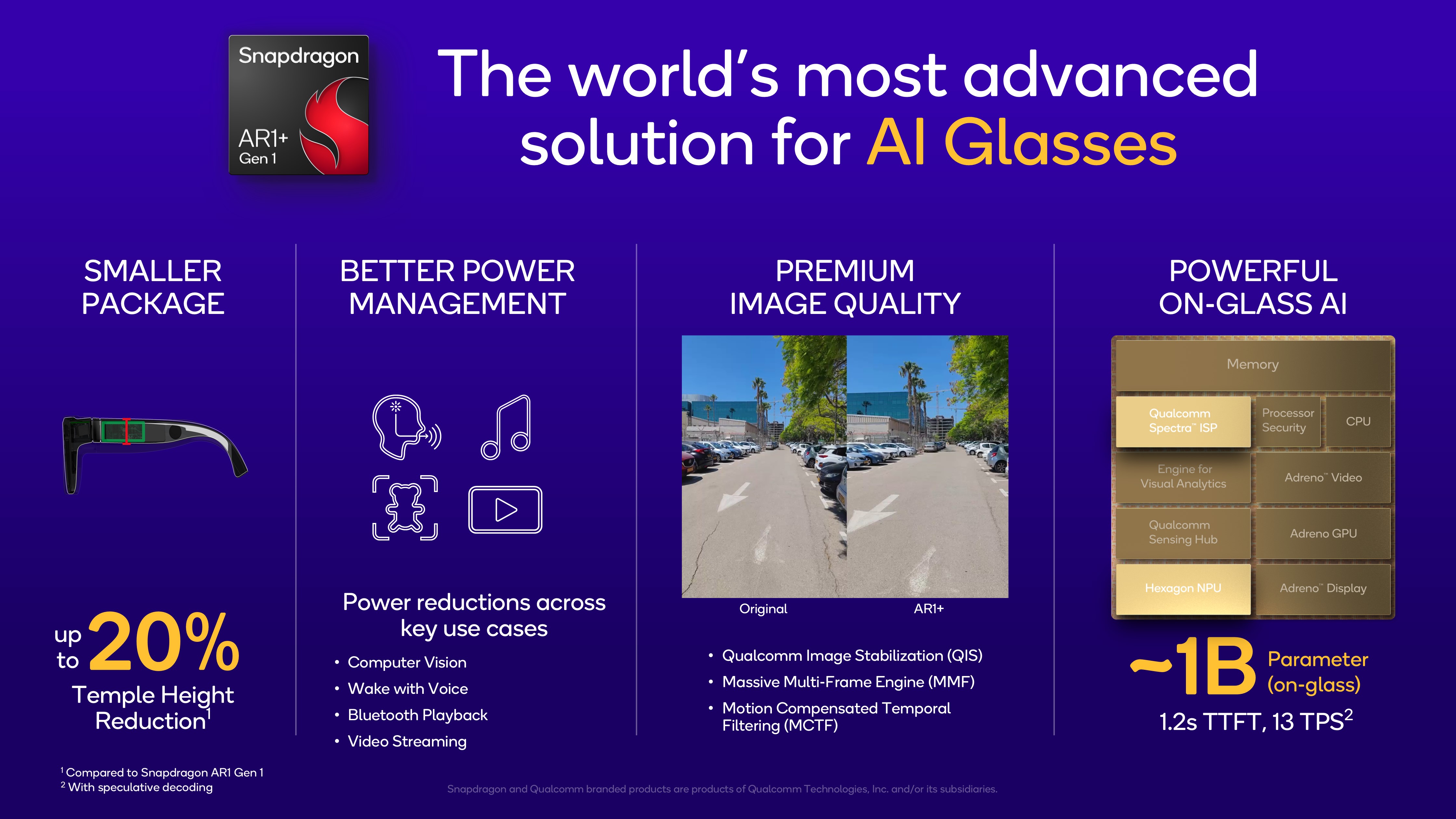Snapdragon AR1+ is the smart glasses breakthrough I’ve been waiting for – here’s why
I just saw the future of smart glasses, and it's powered by Qualcomm's new chip

Qualcomm has just announced the Snapdragon AR+1 Gen 1 chipset — sure to power many of the best smart glasses of the near future with offline AI capabilities and entirely solo operation.
So far, smart glasses like the Ray-Ban Meta specs need a smartphone connection to run all their tasks. And looking ahead, companies are looking to a computational puck that you pocket to take the heavy lifting off your glasses.
That’s the imbalance that Qualcomm’s new chip aims to start fixing — bringing us closer to my dream future for smart glasses in a device that does it all directly on the specs without needing an additional component. And after seeing a demo myself, I believe the team’s onto something.
What you need to know

Qualcomm’s making a bet on augmented reality being done in three different ways for smart glasses so far:
- Glass to Cloud – taking the load off the specs and relying on a cloud connection.
- Glass to Phone, PC, Car – connecting to a device with far more computational power.
- Glass to Puck – a la Meta’s Project Orion, this envisions a dedicated secondary device for all your computation.
However, the chip company also sees a fourth, one that doesn’t rely on some form of external device or cloud processing. That is, of course, having the computational potential built into the glasses themselves, but getting it down to a small enough size while maintaining sufficient performance for day-to-day use has not been possible…well, that is, until now.

Snapdragon AR+1 Gen 1 is launching alongside the pre-existing XR2+ to provide enough power to run multi-modal AI capabilities entirely on-device for ultra-low latency, all while being 26% smaller than previous generations of this chip.
AR+1 Gen 1 also brings an enhanced image quality for displays, performance improvements and drastic power efficiency boosts too.
Get instant access to breaking news, the hottest reviews, great deals and helpful tips.
Seeing it in action

To make it work, you need models on the smaller side to fit – so-called Small Language Models (SLMs), but the result is, frankly, incredible.
Running Llama 1B on the RayNeo X3 Pro smart glasses, SVP of Product Management Ziad Asghar ran through a complex set of queries to make fettuccine alfredo for his daughter’s birthday party. Throughout each bit, Asghar is receiving both an audio response and text appearing on the glasses' lenses.

The demonstration I saw is the kind of thing you’d expect to see at a lot ot AI-based keynotes, but the real magic here is that all of this is happening entirely locally on the device, no phone or cloud needed. Just the processor on the specs themselves!
This is a world's first, and it’s proof that we’re heading in the right direction.
Outlook

Way back at CES 2024, I predicted an AR glasses revolution. Granted, I was about a year too early, but it’s finally beginning to happen — those parallel paths of development that you see VR headsets and smart glasses on are starting to merge.
Qualcomm is hedging its bets at the moment, but the finish line everyone is racing towards is something with the power of a VR system crammed into something as small as a pair of specs.
Snapdragon AR1+ Gen 1 is a huge step towards that, and I’m looking forward to seeing exactly what this silicon is able to pull off in glasses — maybe giving Android XR a handy boost.
More from Tom's Guide
- Ray-Ban Meta smart glasses just got a huge price cut — save 20% ahead of Father's Day
- Confirmed: Nintendo Switch 2 USB-C port does NOT support AR glasses
- Meta Quest 4 may be delayed until 2027 — but a lightweight alternative could take its place next year

Jason brings a decade of tech and gaming journalism experience to his role as a Managing Editor of Computing at Tom's Guide. He has previously written for Laptop Mag, Tom's Hardware, Kotaku, Stuff and BBC Science Focus. In his spare time, you'll find Jason looking for good dogs to pet or thinking about eating pizza if he isn't already.
You must confirm your public display name before commenting
Please logout and then login again, you will then be prompted to enter your display name.
